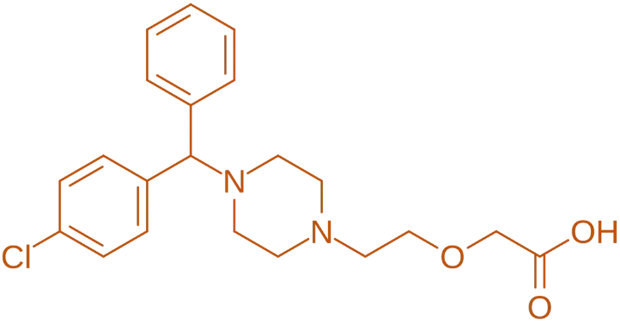Cetirizine is a second-generation H₁-antihistamine derived from hydroxyzine, widely used for managing allergic rhinitis, chronic urticaria, and seasonal allergies. Its structure includes a piperazine ring substituted with a carboxylic acid group and an aromatic ring, contributing to its peripheral selectivity. By blocking H₁ receptors without significant CNS penetration, it effectively relieves histamine-mediated symptoms with minimal sedation.
Structure of Cetirizine

- Cetirizine is a metabolite of hydroxyzine with a piperazine ring substituted with a carboxylic acid group and an aromatic ring.
- Chemical Formula: C₂₂H₂₁ClN₂O₃
Mode of Action
- Selective peripheral H₁-receptor antagonist with minimal CNS penetration.
- It effectively reduces histamine-induced symptoms with reduced sedation.
Advertisements
Uses
- Allergic Rhinitis: Effective in treating symptoms like sneezing, itching, and runny nose.
- Chronic Urticaria: Alleviates hives and skin itching.
- Seasonal Allergies: Provides relief from pollen-induced allergic symptoms.

